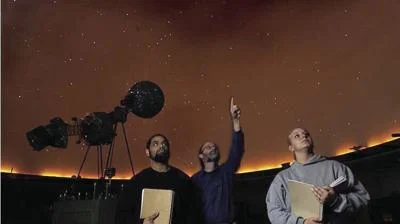
A Century of Wonder: Celebrating 100 Years of Planetariums Bringing the Stars Indoors
For 100 years, the planetarium has captivated audiences, offering a mesmerizing glimpse into the cosmos from the comfort of a darkened room. But how did this ingenious invention come to be? Let's journey back to May 7, 1925, at the newly opened Deutsches Museum in Munich, where the first public audience witnessed the spectacle of the opto-mechanical planetarium.
Visualizing the Heavens: A Historical Perspective
Throughout history, cultures worldwide have used the stars to navigate, understand their place in the universe, and make sense of the world. Recreating the movements of celestial bodies has been a long-standing pursuit. In the 18th century, the orrery, a clockwork model of the solar system, emerged. One remarkable example is Eise Eisinga’s orrery in Franeker, Netherlands, still operational today, showcasing a view from an impossible, external perspective.

The Birth of the Planetarium
The desire for a realistic, earth-based view of the stars grew in the early 20th century. Figures like Oskar von Miller, director of the Deutsches Museum, sought to restore the night sky to the public, especially as light pollution dimmed the natural view.
An early attempt was the Atwood Sphere in Chicago (1913), a perforated metal sheet that replicated the night sky when viewed from within. However, representing the dynamic movements of planets proved a challenge.
The German optical company Carl Zeiss AG took on the task. After some setbacks, their first planetarium projector premiered in 1923, marking a pivotal moment. Instead of fixed holes, stars and planets were displayed by projection, revolutionizing the experience.

The Global Spread and Technological Evolution
Planetariums quickly gained popularity worldwide. The first US planetarium opened in Chicago in 1930, followed by Asia in Osaka, Japan (1937). This growth accelerated during the 1960s space race.
The opto-mechanical planetarium, a technological marvel, used perforated plates illuminated by bright lights to project around 5,000 stars. Separate projectors, driven mechanically, calculated the positions of the Sun, Moon, and planets.
By the 1990s, digital technology transformed planetariums. Calculating planet positions digitally became possible. In 1999, the Melbourne Planetarium became the first digital planetarium in the Southern Hemisphere.
Today, video projection systems, or fulldome technology, dominate planetariums, creating seamless 360-degree theaters by blending output from multiple projectors. This innovation allows audiences to explore billions of galaxies and fly through space.

A Gateway to the Stars
Planetariums now incorporate data from telescopes and space agencies worldwide, enabling audiences to explore our solar system and beyond. Yet, the core appeal remains: planetariums evoke wonder and tap into our fascination with the vast mysteries of the night sky.
As we celebrate a century of bringing the stars indoors, we are reminded of the enduring power of planetariums. How do you think planetarium technology will evolve in the next 100 years? Share your thoughts and experiences in the comments below!